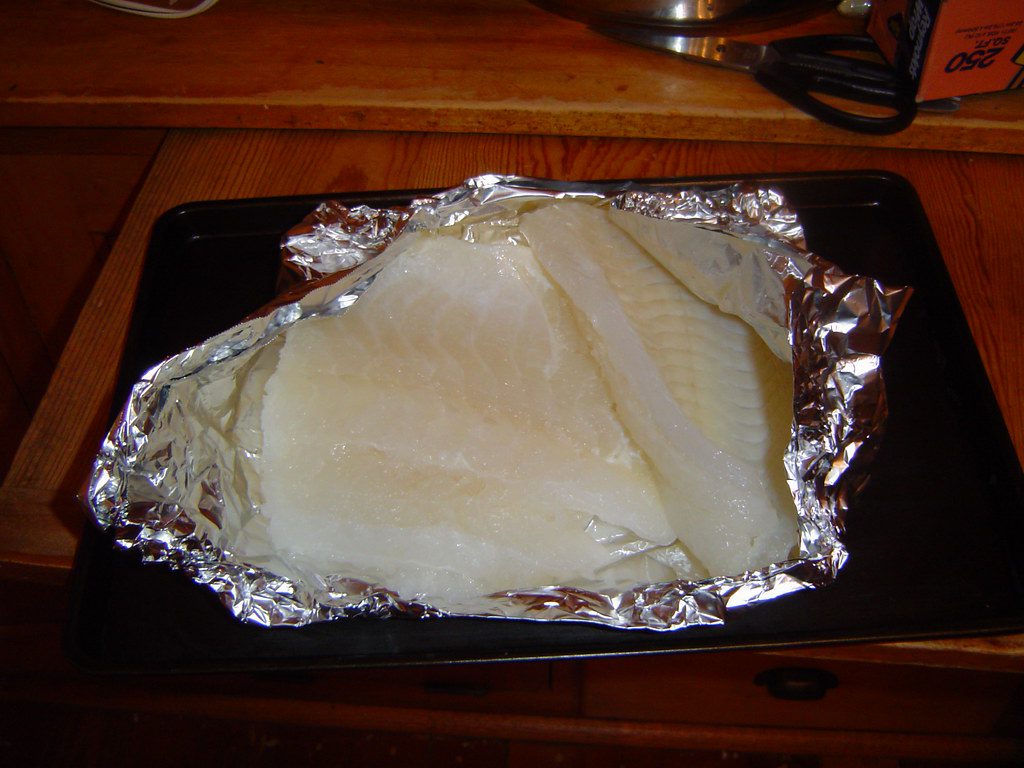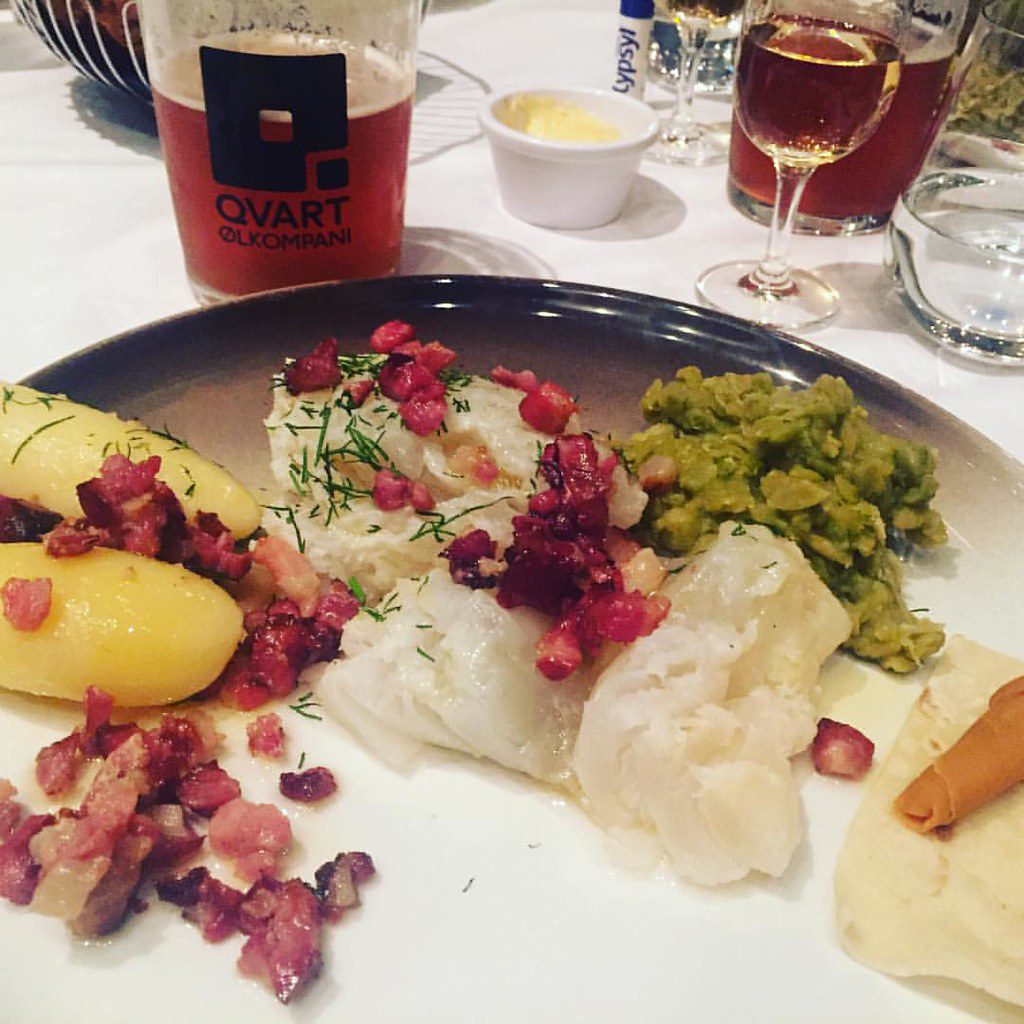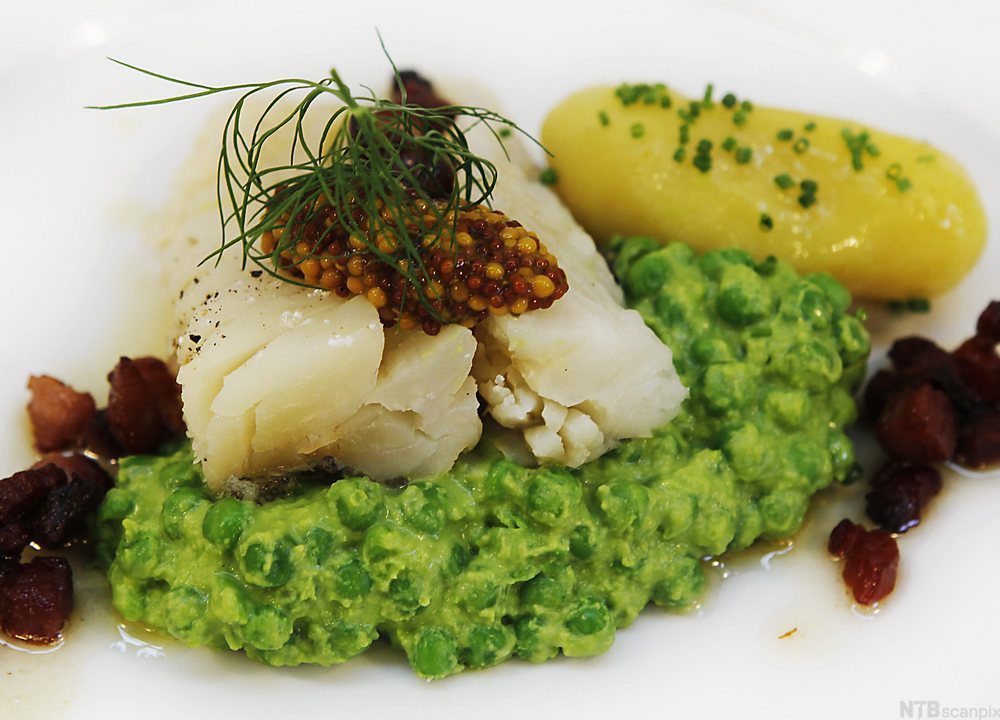The finished lutefisk usually is the consistency of Jello. It is also called lyefish, and in the United States, Norwegian-Americans traditionally serve it for Thanksgiving and Christmas. In many Norwegian homes, lutefisk takes the place of the Christmas turkey. In Minnesota and Wisconsin, you can find lutefisk in local food stores and even at some restaurants. It is a food that you either love or hate, and, as some people say, “Once a year is probably enough!”
During the fall in Wisconsin, people watch their local newspapers for announcements of lutefisk suppers, which are usually held in Norwegian churches. Usually every Norwegian church will host at least one lutefisk supper between October and the end of the year. The dinners have become so popular that lovers of this special cod dish drive great distances, and these are not just people of Scandinavian descent.

The history of lutefisk dates back to the Vikings. On one occasion, according to one legend, plundering Vikings burned down a fishing village, including the wooden racks with drying cod. The returning villagers poured water on the racks to put out the fire. Ashes covered the dried fish, and then it rained. The fish buried in the ashes in the ashes thus became soaked in a lye slush. Later the villagers were surprised to see that the dried fish had changed to what looked like fresh fish. They rinsed the fish in water to remove the lye and make it edible, and then boiled it. The story is that one particularly brave villager tasted the fish and declared it “not bad.”

Norwegian-Americans believe that lutefisk was brought by their ancestors on the ships when they came to America, and that it was all they had to eat. Today the fish is celebrated in ethnic and religious celebrations and is linked with hardship and courage.
According to whatscookingamerica.net. Source of photo: internet








